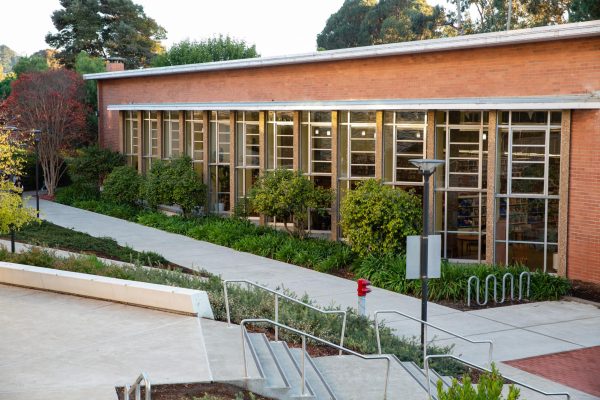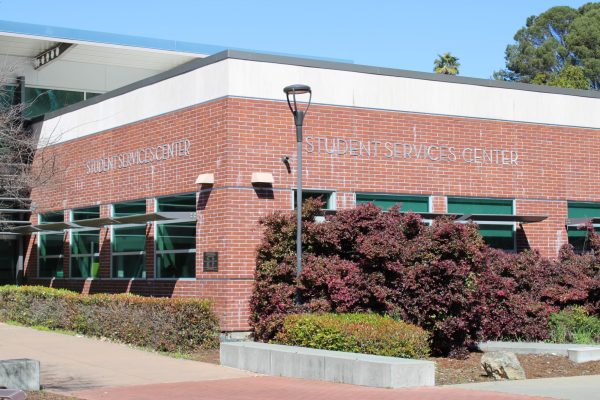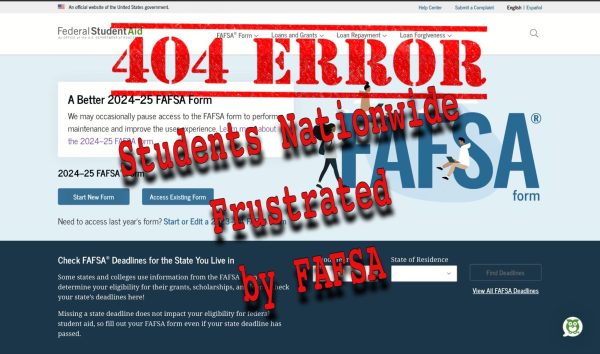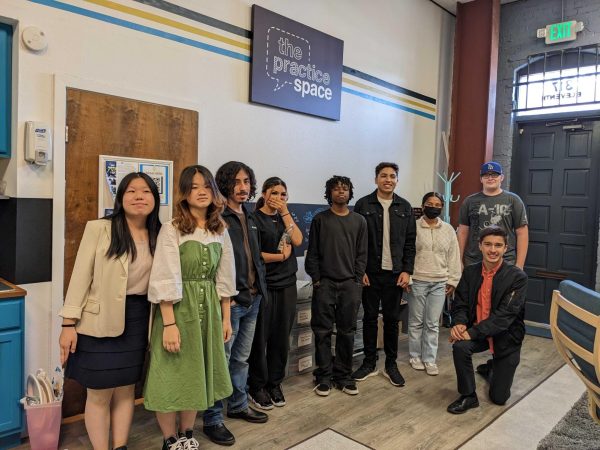Workers provoke recurring gas leaks
March 2, 2016
Breached natural gas pipes have been an irregular, but recurring, nuisance during the years of the Campus Center’s construction.
PG&E spokesperson Tamar Sarkissian said, “Third party construction crews sometimes strike our equipment.”
Buildings and Grounds Manager Bruce King said Ghilotti Bros., Inc., one of the subcontractors, broke the two-inch gas pipe by the Library while working on the Campus Center. They knew where the broken pipe was located. PG&E had already marked the location.
Police Services Corporal Tom Holt said, “It’s just something that happens with construction.”
Police Services ensures that everyone is out of the buildings if they need to be evacuated for safety procedures, King.
Holt said, “We handle evacuations as part of a team effort with the fire department. We just cordon off the area.”
King said, “After evacuation they set up command posts around the building to make sure no one gets in.”
The senior administration is notified and they notify the community and tell students classes are canceled.
King said, “It’s just human error. No matter how careful you are, things happen.”
Sarkissian said, “This can (usually) be avoided by having the contractor call 811 (before digging). Somebody will come out to mark where the utilities are. We encourage homeowners to call too.”
USA North 811 is a free service. Those planning significant digging should call two days before the project begins. Contractors are required by law to call.
“We set up stalls at Home Depot and send out press releases and try to let people know,” she said.
King said, “The Buildings and Grounds crew are activated to help. We can’t repair it (ourselves). We have to wait on PG&E.”
Sometimes the PG&E crew use the equipment from the college.
Holt said, “(PG&E) can shut off the gas pretty quick. There haven’t been any injuries.”
Sarkissian said, “We stop the gas flow by squeezing or pinching the line, or (by using) other techniques. The crew on site determines the best technique depending on the pipe. Sometimes the lines are made out of steel, sometimes they’re made out of plastic. There’s a different technique for a half-inch pipe than for a larger pipe.”
The size of the gas lines varies from half-inch service lines, to the two inch or so distribution lines, to the giant transmission lines.
King said, “Our campus has been here for about 65 years and there’s plenty of stuff that used to be here before the campus. They never know what they’re going to find. I find conduits that are marked incorrectly. (For example) a conduit marked for electricity and it’s full of water for irrigation.”
King said, “After each (leak) PG&E goes and checks each of our meters. Before they let anyone back on campus they send people with sniffers (hand held gas detectors) through every affected building. We’ve never had to shut down the whole campus.”












Scott Landes • Mar 3, 2016 at 12:10 pm
IT is great that the contractor called 811. Based on the Common Ground Alliance 2014 report on damages nationally, there is less than a 1% chance of damage when 811 is called. So Police Services Corporal Tom Holt satement “It’s just something that happens with construction.” is true, but a little misleading because there is leass than a 1% chance and it should not be a common occurance when proper excavation practices are used.